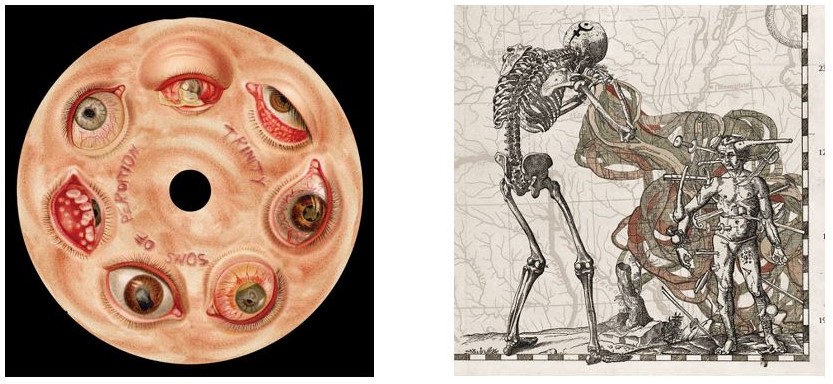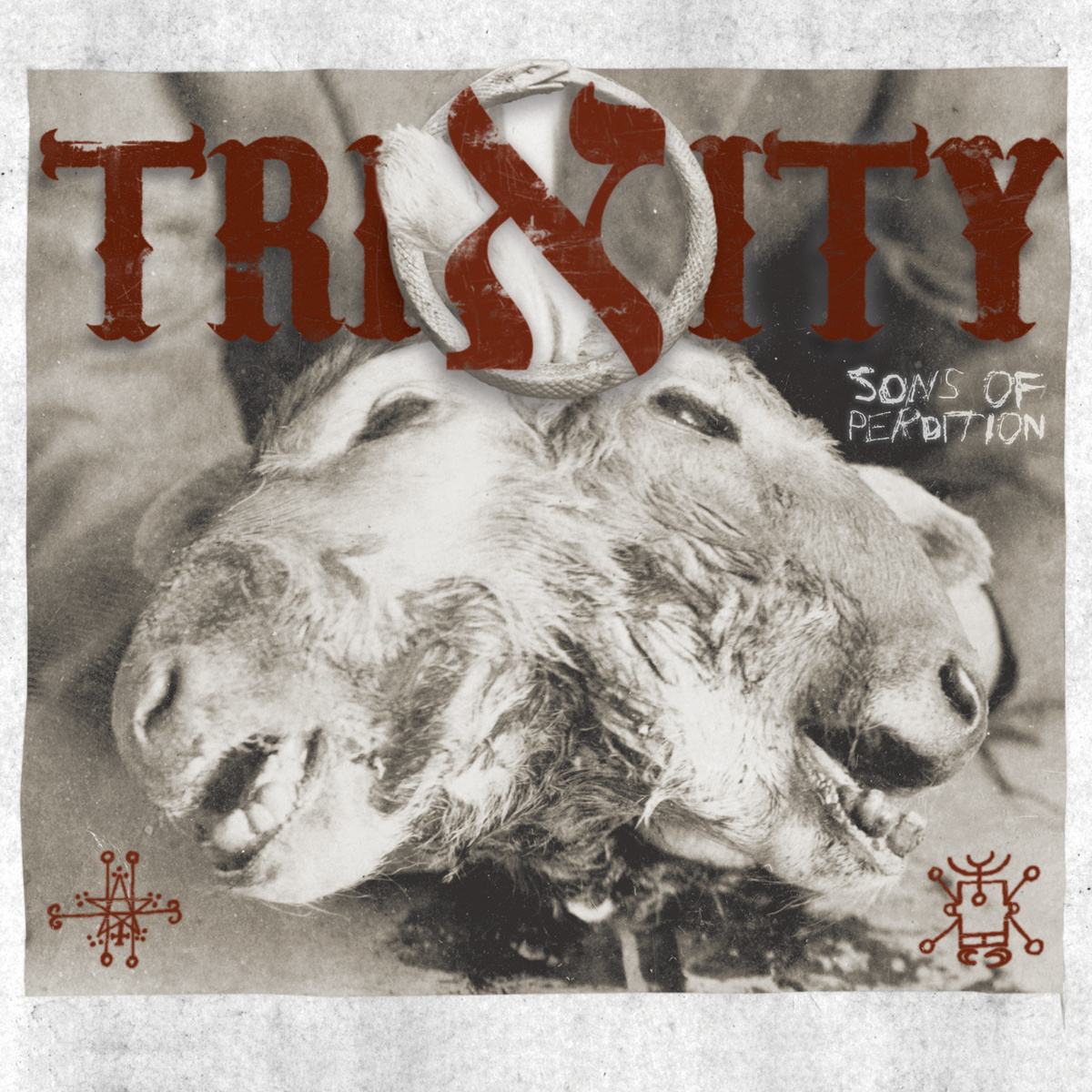 This article is an ironic nod to the reportage style often found in glossy overpriced music magazines like Rolling Stone, NME, Q, Uncut, et cetera in their pretentious in-depth articles about albums like ”The Dark Side of the Moon", and how the classical songs on the album came to life, and then walk it through song by song. But applied on the gothic country genre. This is, of course, impossible since the genre totally lacks nostalgia, glamour and a large audience. But I will implement it anyway.
This article is an ironic nod to the reportage style often found in glossy overpriced music magazines like Rolling Stone, NME, Q, Uncut, et cetera in their pretentious in-depth articles about albums like ”The Dark Side of the Moon", and how the classical songs on the album came to life, and then walk it through song by song. But applied on the gothic country genre. This is, of course, impossible since the genre totally lacks nostalgia, glamour and a large audience. But I will implement it anyway.
More specifically, I have chosen ”Trinity” by Sons of Perdition. While the glossy articles mainly focus on unlimited and expensive studio time, the use of studio musicians, lavish self-consuming life style and being creative in the spur of the moment this article focus on home recording, self-reliance and do-it-yourself ethics, not too offensive lifestyle and the fulfillment of an extreme album idea. The idea was outlined long ago. For me, the latter example is a far greater achievement and this from only one man (with a little help of his friends). Simon Broke (double bass) deserves a honorable mention. He didn't write any of the lyrics, but definitely impacted the music on the album.
Zebulon Whatley is known for using several layers, double, triple and even multiple meanings and, occasionally, smokescreens. It's not easy to uncover facts. Facts are also a relative concept in this case. The doctoral thesis ”Ideas, themes and motifs in the works of Zebulon Whatley” is waiting to be written. A fitting subtitle would be "- staring into an abyss". To understand Trinity (better) you need to understand the context and the trilogy of albums. The first album “The Kingdom is on Fire” was completely informed by Judeo-Christianity and its theme was physical death. The second album "Psalms for the Spiritually Dead" was partially informed by Judeo-Christianity, but pulled from the doubt inherent in some of the biblical Book of Psalms. The theme was spiritual death. Trinity draws from the vast well of world religion. The religious message in Trinity is more obscured than in its predecessors. The religious references are there, but they are largely cloaked, forcing the listener to listen, think and interpret.
This article will explore some, but not all, of Trinity’s many layers and meanings and maybe give some insights when it comes to understanding the artist. The title of the article is misleading, since it doesn’t really deal with the actually making of it. In another context, Zebulon Whatley has declared that he is not a very proficient musician and that he could record and re-record a song 30-50 times before he is satisfied with the result. However, the making of it wouldn't be very interesting to read about. The “making of” in this article is more about ideas, themes and motifs.
Album title
It seems natural to begin with the album title, Trinity. It has several references of which some are quite obvious. First, it's the third Sons of Perdition album that concludes the dissolution trilogy (the last of three albums). Second, it refers to the biblical meaning of trinity of the Father, the Son and the Holy Spirit. Third, it refers to the atomic test site outside Socorro in New Mexico where the world entered the Atomic Age on July 16, 1945. These are the three official references. Some reliable primary sources point out the fact that Zebulon Whatley grew up near the Trinity River in East Texas. If this reference is to be counted for, there are four references for the album title. They may exist other references. Only Zebulon Whatley knows.
Art work (front cover)
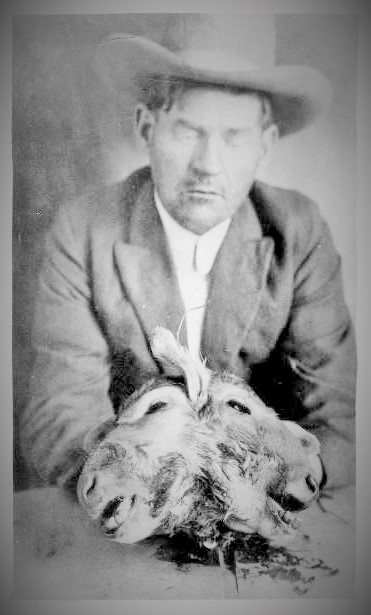
The front cover is a gruesome sepia-toned image of a conjoined sheep’s severed heads. Behind sits a dark figure of man. The image is cropped. You can view the full image to the right. The photo was found in a derelict church in rural East Texas. The man and the sheep heads comprise the trinity. The sheep is Lamb of God, Jesus, as the two-headed god Janus (janus-faced). It represents duality and choice: the left-hand (evil) and right-hand (good) paths.
The man behind, figuratively speaking, is God (although he don’t look particularly god-like on the uncropped original photo). The three figures on the front cover represents the corruption of the Holy Trinity.
There is more to the picture. The “N” in the album title is not only a stylized middle letter. It’s an aleph, the first letter of the Hebrew alphabet. It’s the alpha, surrounded by ouroboros-as-omega (an ancient symbol depicting a serpent eating its own tail). It symbolizes self-reflexivity or cyclicality, especially in the sense of something constantly re-creating itself, the eternal return, and other things which operate in cycles that begin anew as soon as they end. Together they represent the entirety of the world.
The letter aleph and what it represents requires a separate article, but in the smaller world of Trinity, lets establish that The Fool (see below) is the hook that connects the realm of God with the realm of Man. There is more to the picture which also meets the eye. The symbols at the bottom of the front cover are taken from The Lesser Key of Solomon a.k.a. Clavicula Salomonis Regis or Lemegeton. The Seal of Astaroth (able of giving mortal beings the power over serpents) on the left and the Seal of Vassago (who can be persuaded to tell the magician of events past and future) on the right. Again, this subject requires a separate article since there are seventy-two (72) demons and this is only in the first of five books.
Art work (back cover)
The back cover of the album shows the first atomic explosion at the Trinity Test Site outside Socorro in New Mexico. The photo was taken 16 milliseconds after detonation on July 16th, 1945. The hemisphere's highest point in this image is about 200 metres (660 ft) high. The stock photo is superimposed on a landscape photo Zebulon Whatley took somewhere in New Mexico (probably in the northeast). You can view the back cover together with an alternative version with a different tracklist here (opens in a new window).
Art work (inner sleeve)
The inner sleeve shows a nineteenth century map of the US. The Fool’s journey is marked in red (see enlarged and detailed map below). On the left side of the inner sleeve a small Abraxas a.k.a. Abrasax sits inside an ouroboros. This requires a separate article about gnosticism.
The latitude and longitude markers are replaced by numbers. If you don’t have the master key or not are a very experienced codebreaker you will not be able to read the Latin palindrome ”In girum imus nocte et consumimur igni” ("we go wandering at night and are consumed by fire") which describes the behavior of moths. Zebulon Whatley’s choice of a palindrome can probably be explained of the nature of it being legible forward or backward. However, more research is needed to establish this hypothesis.
The liner notes at the left side of the inner sleeve ends “So concludes the Dissolution Trilogy. It is finished.” The last sentence mirrors - no other resemblance intended - Jesus Christ’s final words on the cross before he gave up his spirit.
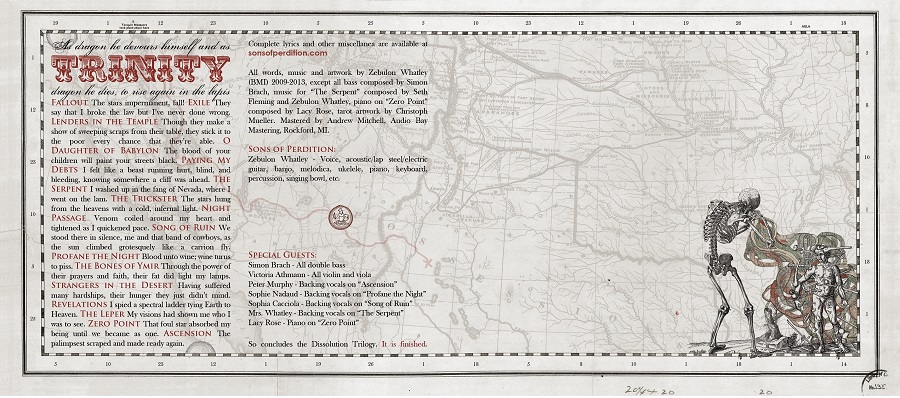
The cd and cd tray
The physical CD artwork features the seven eyes of the slain lamb of God, but corrupted with disease. Text is carved into the flesh in reference to the Christian concept that Jesus is the word of God made flesh. Some avant-garde scholars in anthropology believe the writing on the cd to be a reference to anthropodermic bibliopegy (the practice of binding books in human skin).
Numbers are important. The number seven is especially important. “And I beheld, and, lo, in the midst of the throne and of the four beasts, and in the midst of the elders, stood a Lamb as it had been slain, having seven horns and seven eyes, which are the seven Spirits of God sent forth into all the earth.” (King James, of course). The number seven also represents the truth.
On the inner sleeve we also find a skeleton and a wounded man (see above right for a magnified excerpt). The symbol on the back of the skeleton's head is a combination of the Circled Dot glyph (which represents God or the Sun) and the glyph for Mars (God of War). The circle is broken.
The size of the skeleton and markings indicate that he's a god, albeit a dead one or maybe a god of death (or both). The multi-colored vomitous stuff being sprayed by the dead god onto the wounded man is from an old survey of flood plains of a river. The injured man is an example of a Wound Man. Wound Man is an illustration which first appeared in European surgical texts in the Middle Ages. They're illustrations that show wounds a person might suffer in battle, often with surrounding or accompanying text stating treatments for the various injuries.
The role of numbers
A number is a mathematical object used to count, measure, and label. Numbers also have other functions. Trinity contains many layers and meanings. It’s therefore gratifying that the space-time dimensions are limited. The space dimension is the Fool’s journey from Sacramento to Socorro in New Mexico (marked in red on the map). It's a hard and unpleasant trip from point A to point B.
The time dimension isn’t clear since there's no time markers in the lyrics that could be used to date the events taking place. However, some physicists believe that the album operates on at least three parallell planes of temporal existence: the late nineteenth century when the West was won, the Atomic age when the bomb was tested, and well it’s highly disputed, at the conclusion of Western civilization as we know it (the end of time).
The running time is 71:40. 7+1+4+0=12 following numerological reduction. The number 12 represents hanged man (tarot symbol), tribes (of Israel), disciples (followers to Jesus Christ), Zodiac signs and months of the year. The number 12 further reduces to the number 3, 1+2=3 following numerological reduction, which is the Trinity.
The album was released on 11/12/13 (not a coincidence). Eleven is the number of infinite potential. Twelve is a holy number, particularly in the Western world. Thirteen is a karmic debt number in numerology that represents frustration and futility. Together the numbers summarizes the Fool’s journey from Sacramento to Socorro.
There are sixteen tracks on the album. Sixteen is a karmic debt number in numerology that represents the destruction of the old and birth of the new.
In the first song there's a line "Twenty-two is the crown". Twenty-two is the other master number, the ultimate capacity to make dreams into reality. You don't have to suffer from dyscalculia to get confused by numbers.
Plot
Trinity tells the story of a fool’s hellish journey through the blood-soaked deserts of the American Southwest through religious, occult, and alchemical allusions. This is the executive summary. But, there is so much more to Trinity than this.
In an interview with brilliant music journalist James G. Carlson published at No Depression on November 8th, 2013, Zebulon Whatley declared: ”I don’t want to give away too much about the inner workings of ’Trinity.’ I’d prefer for people to approach it like a novel and think about what things may mean and exist. It’s stuffed with symbolism, allusions, and multiple meanings. My fear of pre-digesting the album for people is that doing so leaves the listener with a product to be consumed and immediately shat out. When you already know everything there is to know about something, you don’t need to think about it. I’d rather leave it open to interpretation in the hopes that at least a few people will make an effort at listening to it.”
I count myself to ”We few, we happy few, we band of brothers”. But we are not that few as Zebulon Whatley thinks. On one hand I can fully understand his opinion in the matter. On the other hand, if you know more about ideas, themes and motifs in the music it really deepens the listening experience. There’s always another layer to excavate, angle to twist or meaning to explore. I think I know what I’m talking about after listening to Trinity a countless number of times. The risk of consuming ”the product” too fast is close to zero. Besides, I think it’s very important to document before everything falls into oblivion or goes up in flames (like in Trinity).
First version of Trinity
Trinity was outlined already in 2009. According to reliable but unconfirmed information, twelve songs were initially planned for Trinity, divided into three acts with four songs each. The working titles for the acts were Genesis, Exodus and Revelations. However, more research is needed to establish this as a fact. The album was thought to be a cohesive narrative, wherein each song could serve as a chapter but also could stand-alone as a mini-story. The music was furthermore thought to be very experimental, evocative of Western themes, mystery, grittiness and the desert.
If we consider that a lot of water has flowed under the bridge from initial idea to album release in 2013 the close resemblance between the first and the final version is stunning.
Alternate och never used versions
There are four Trinity songs on The Dissolution Orphans (an album with demos and unreleased songs released in 2014). Zebulon Whatley has been very clear that this isn't an album in its own right. One instrumental song, “Escape!”, wasn’t included on Trinity. Reportedly, it wasn't necessary to explain how the protagonist got from the Amargosa River to the orchard after fleeing the chain gang. Including the song would also made the album too long. “Paying My Debts” goes somewhat slower than the album version. It’s also more dark and brutal than the album version (yes, it’s possible). The lyrics on “Night Passage” are bit different than the album version. ”Lenders in the Temple” is a bit different musically, but isn’t too much of a departure from the album version. Reportedly, but not confirmed, there exist unused lyrics and alternate versions of songs from Trinity.
The Fool's journey
J. Robert Oppenheimer is among those who are called the "father of the atomic bomb". Oppenheimer gave the test site outside Socorro, NM the name Trinity. The name of the site can be derived from a poem by John Donne (1572–1631) “Hymn to God, My God, in My Sickness”. A key sentence in the poem is “So death doth touch the resurrection.”
The poem alludes to sacred geography. In the poem, South means “the heart”, East means “resurrection”, West is “death” and North means “the head”. The Fool travels from (north)West to (south)East from northern California through Nevada and Utah, then south through Arizona and over to New Mexico. The meaning of all this will become more clear when we start to dissect the songs.
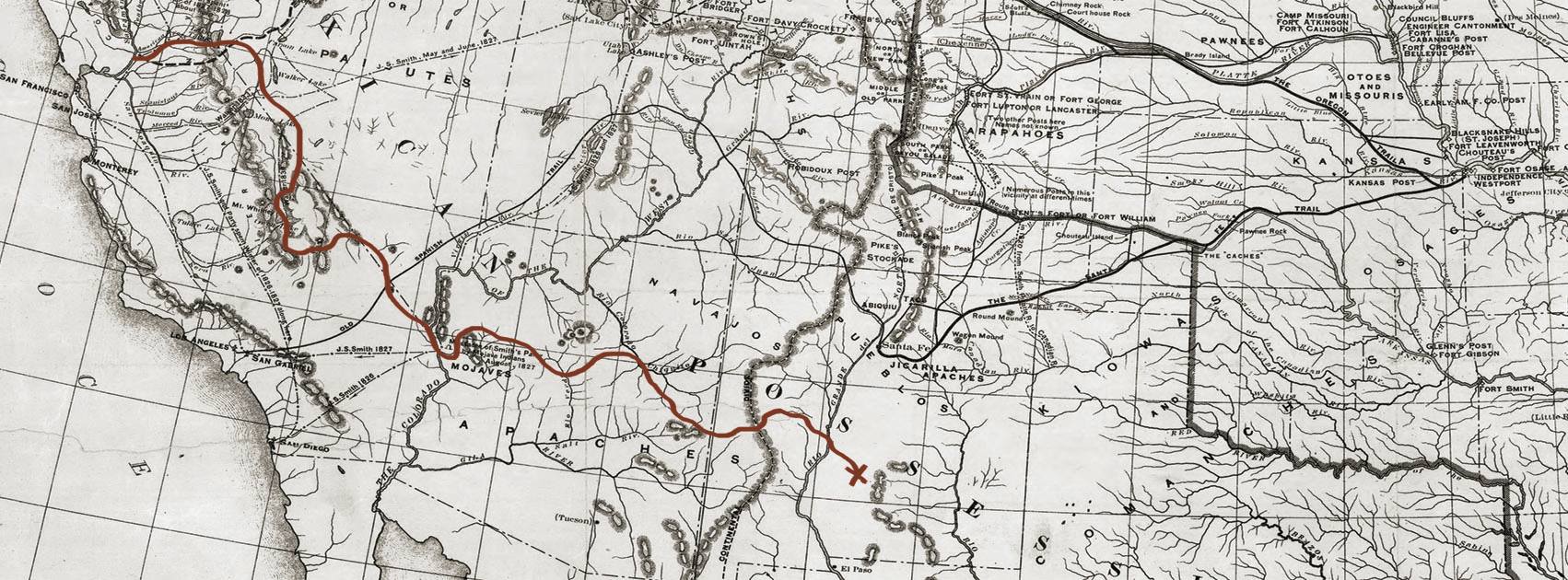
All songs are told from the protagonist’s point of view, except the first (Fallout) and the last song (Ascension). These songs serve as bookends to the story and reinforce the overall perception of the album as cyclical and eternal where the beginning is also the end and vice versa. The imagery of “Fallout” shows the debris from “Ascension” raining down on a new world, fertilizing it and starting the process anew. These songs utilize the same chord progression to drive the point home.
1. Fallout
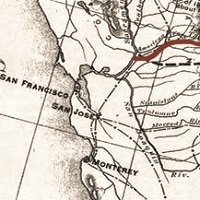 The stars impermanent, fall!
The stars impermanent, fall!
The song starts with the children from the Santo Domingo Pueblo (an Indian Reservation) in NM singing "Holy Holy Holy", which is a Christian hymn. They've been made to adopt the religion of their oppressors and sing hymns to their God in a foreign language. It's probably placed there to mark their rightful place in the land, the forcible relocation and genocide of Native Americans by the US government. The nuclear bomb has replaced their God and is now their new protector.
Fallout means nuclear fallout for most people. The birth of the Atomic Age came with the death of innocence and naiveté. On witnessing the first test of the atomic bomb Oppenheimer later said: We knew the world would not be the same. A few people laughed, a few people cried, most people were silent. I remembered the line from the Hindu scripture, the Bhagavad-Gita. Vishnu is trying to persuade the Prince that he should do his duty and to impress him takes on his multi-armed form and says, ’Now, I am become Death, the destroyer of worlds.’ These lamenting words can be heard in the beginning of the song.
Fallout also stands for The Fool of Eleven (in Tarot imagery) and is numbered with a zero (closed loop) like an ouroboros. The Fool is usually interpreted as the protagonist in the Tarot story and walks unknowingly towards a precipice.
Eleven is the first master number in numerology. It symbolizes infinite potential and the link between man and spirit. The song contains alchemical references where base metals are transmuted (through nuclear reaction) to gold and imbued immortality. Atoms are ripped apart and reconfigured into new elements. The alchemical process is what destroys his body in “Ascension” and reconstitutes him as a new entity in “Fallout”. The tree-like cloud of nuclear fallout can parallel to Tree of the Knowledge of Good and Evil. Afterwards is the Fall.
Originally the first song was to be called “The Fall”. However, out of this came two songs “Fallout” and the next song, “Exile”.
2. Exile
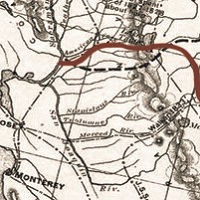 They say that I broke the law but I’ve never done wrong.
They say that I broke the law but I’ve never done wrong.
The protagonist is driven out of Sacramento, probably forcibly. Let’s just say it was best to leave the town. There are similarities with the exile of Adam and Eve from Eden. The protagonist broke a law he didn’t understand or accepted. He can’t go back. But where can he go? West is no option (death awaits) so he starts aimlessly walking east.
He has chosen the left hand (evil), but has no path or direction. The song contains alchemical references “I was adrift in a sea of ancient green pines. Unshaped and unguided, like ore in a mine”. The alchemists transformed ore into precious metals. The meaning could be that The Fool is yet unrefined. He hasn’t found a higher purpose for his existence and exists as a base (albeit blameless) person at least in his own eyes.
In the beginning he is utterly alone on his wanderings. He falls in with a drifter from Alaska. Together they wander out east through the Sierra Nevadas. The original title of the song was "Exodus".
3. Lenders in the Temple
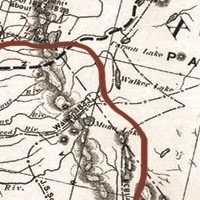 Though they make a show of sweeping scraps from their table, they stick it to the poor every chance that they're able.
Though they make a show of sweeping scraps from their table, they stick it to the poor every chance that they're able.
The biblical reference is obvious. The cleansing of the Temple narrative tells of Jesus expelling the merchants and the money changers from the Temple. The choice of title could probably be the artists way to protest against the capitalization of the Church.
In this story, the protagonist and the drifter turn to crime to survive and go for the church’s funds. The protagonist is wounded and the drifter is shot to death by a priest. It gets messy in a pool of blood, brains and grime. However, the shooting priest is more concerned with clawing for his gold than in the loss of life. It seems obvious that this is very dry comment from the artist upon the hypocrisy that exists within a religious organization that values money over altruism. What is the well balanced answer from the artist? ”Flip their tables, burn their notes, let's string 'em up and slit their throats.”
The protagonist gets arrested by the police.
4. O Daughter of Babylon
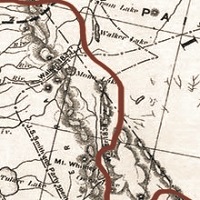 The blood of your children will paint your streets black.
The blood of your children will paint your streets black.
The biblical reference is Psalm 137, which was popularized in ”Rivers of Babylon” by German disco group Boney M. in 1978. Their version didn't end as bloody as the biblical psalm: "Happy shall he be, that taketh and dasheth thy little ones against the stones" (King James version, of course). The geographical setting is also quite different. In this song the people are sitting down at the Amargosa River.
The protagonist works in a chain gang. The bossman wants a song. The chain gang sings and makes music with their chains. A question arises: How can we sing the Lord’s song in this land? The bossman is amused and wants them to sing a bit more more. The protagonist swears that he will burn the place to ground when he is free. He will pay his oppressors back in full. We are inclined to believe him.
5. Paying My Debts
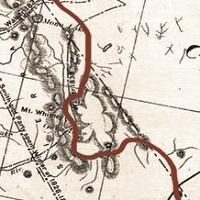 I felt like a beast, running hurt, blind and bleeding, knowing somewhere a cliff is ahead.
I felt like a beast, running hurt, blind and bleeding, knowing somewhere a cliff is ahead.
The protagonist is beaten and starved in jail. The moral of the story is that if you treat a man like a dog then that's what he'll become. The protagonist savagely beats his cellmate. It was an act of defense or defiance or rage. Which of it was it? The answer to the question is important. The protagonist remains (consciously) vague about the motive. The protagonist applies scraps of whatever religion is most applicable to his situation.
This song contains an important shift in perspective. The protagonist doesn’t see himself as a vengeful victim (to suffer in the land of Nod, east of Eden). Here he sees himself as the vanquisher of his foe. The tone is defiant. ”I’m no bossman’s dog.” In the song he compare himself to Samson who slew a thousand men with the jawbone of an ass. Said and done. He picks up a bone and cleaves the bossman’s fat head clean in two. He falls into the dust as the protagonist spits on his face. "Brother, the same goes for you." The brother mentioned is probably a reference to Cain, who killed his brother, Abel.
6. The Serpent
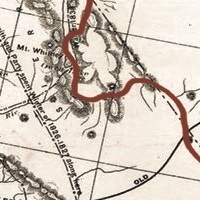 I washed up in the fang of Nevada where I went on the lam.
I washed up in the fang of Nevada where I went on the lam.
The protagonist flees and finds work at an orchard. In the song there is a key sentence, ”I reached for an apple and suffered a bite.” This has led to an infected dispute among linguists. One school (serpent theory) argues that it is clear from the lyrics that the protagonist is bitten by a hidden snake. A competing school (Apple theory) argues that the protagonist suffers a bite of the apple, meaning he takes a bite of the fruit. It's not said explicitly that he was bitten by a snake. This is primarly not semantic. The two interpretations leads in completely different directions.
There are arguments and evidence supporting both theories. In the serpent theory, the bite envenoms him and sends him further down the slippery slope of evil deeds. This theory is supported by the song title "The Serpent".
In the Apple theory, the bite refers to the forbidden fruit in the Garden of Eden. The forbidden fruit conveys knowledge of good and evil. In this interpretation the evil that he commits is his own fault and he’s culpable for his actions. There are no extenuating circumstances. The theory is supported by a line in the next song ”Poison’s in everything. Nothing’s without poison”. The protagonist is poisoned, but only by his experiences and actions.
An Indian tells him about Coyote, a trickster from the woods. Coyote is a common character in Native American religion known for creating chaos and setting up situations that spin out of control, much like the Norse god Loki. Is Coyote a helping or toppling hand?
7. The Trickster
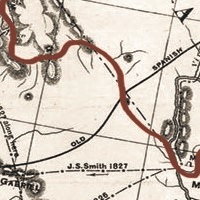 The stars hung from the heavens with a cold, infernal light.
The stars hung from the heavens with a cold, infernal light.
The protagonist is taken to the trickster who tells him the prognosis isn’t good, despite the fact that he prayed and sang for four days and four nights trying to cleanse his blood. ”I’ve bought you some time, but another year you won’t see”.
But, all isn’t lost. The trickster advises him to head east to the town of Trinity. There he will find a great healer who holds the spring to boundless life, and he will sell him his fill. The Trickster is smug or ironic. “My medicine has placed you on a path to something new”.
The Trickster’s history of giving good advice isn’t encouraging, but the protagonist, who has walked aimlessly, now has a direction and begins his journey to Trinity. The Trickster sends the protagonist down a new path, but it’s unclear where this path will ultimately lead. This line is probably meant to sow the seeds of doubt in the mind of the listener as to whether The Trickster’s medicine is the cause to the protagonist's madness, rather than the serpent’s venom. Choose one of the above.
The key sentence in this song about poison comes from Paracelsus a.k.a. Philippus Aureolus Theophrastus Bombastus von Hohenheim, a Swiss German philosopher, physician, botanist, astrologer, and general occultist and founder of toxicology. Paracelsus had a pragmatic view on the subject. ”Poison is in everything, and no thing is without poison. The dosage makes it either a poison or a remedy.” It’s probably included here to hint that the protagonist wasn’t corrupted by the serpent, but rather by his own experience and actions in the world (the Apple theory).
8. Night Passage
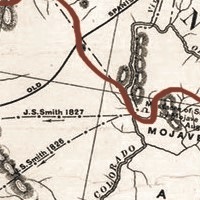 Venom coiled around my heart and tightened as I quickened pace.
Venom coiled around my heart and tightened as I quickened pace.
The protagonist walks through the desert wastes at night with or without posion in his veins. He either sees or hallucinates many things (cold flames dancing, a herd of camels and the muffled drone of a choir). He believes that he by the way may have killed a drifter, but his body evaporated. The protagonist walks through abandoned mining towns. He believes ghost watch him from windows. Sinkholes and sand have taken over.
The reference to destroyed towns from the Old Testament is obvious. Camels can be seen in some deserts, but not in America. At least that’s what I thought. In 1856, the US Camel Corps was established to test the efficacy of Camels as pack animals in the US military. High temperatures and dry climates are no problems for a camel. 30 animals were imported from Smyrna, Turkey. However, the project was abandoned at the beginning of the Civil War and the camels were set loose in The American Southwest. The last sighting of a feral camel was in Douglas, Texas in 1941. Maybe our protagonist didn’t hallucinate and actually saw camels in the night.
9. Song of Ruin
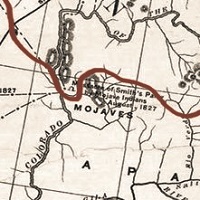 We stood there in silence, me and that band of cowboys, as the sun climbed grotesquely like a carrion fly.
We stood there in silence, me and that band of cowboys, as the sun climbed grotesquely like a carrion fly.
This is the true story of the Canon Diablo Shootout in 1905. How would you describe a scene where a bandit is slain, buried, then dug up and given a drink of whiskey (since the drink was paid for, but never drunk) while you take some pictures? A Kodak moment? Well, life is stranger than fiction sometimes. The pictures were displayed on the walls of the Wigwam Saloon in Winslow until the 1940s when the building was torn down.
The people and place names in the songs are all real. The only thing that has been changed is the number of bandits (from one to two). The other bandit survived the shootout and was sent to Yuma Territorial Prison for nine years.
"I just can't allow that a man would buy whiskey and not live to drink it," said a man like a goat. "We'll give 'em what's theirs, boys, so take up that bottle!" Then I helped them pour liquor down their slackened throats.” The protagonist is an observer of the events and have a passive role in the song (not killing someone), but is complicit in the crime against the peace of the tomb.
The song was originally written for the album, “Psalms For the Spiritually Dead” with the original name “Psalm of Ruin”. It didn’t fit within the context, but worked out geographically and thematically for Trinity according to a reliable primary source.
10. Profane the Night
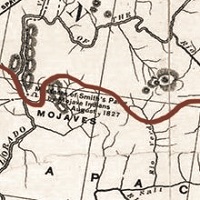 Blood unto wine, wine turns to piss.
Blood unto wine, wine turns to piss.
The title of the song is taken from a line in Homer’s Odyssey. The Cyclops Polyphemus is being blinded by a fiery stake by Odysseus (who told him his name is Nobody) and his men and wails in pain. The Cyclops’ kinsmen ask what ails him. ”Polyphemus, what dire affliction has come upon you to make you profane the night with clamour and rob us of our slumbers?”. A legitimate question, indeed. Polyphemus answers, ”Nobody hurt me.” Score one for the Apple theory? The other Cyclops’ leave him to die, believing him to be afflicted by the gods.
With ”Profane the Night”, the album’s ”heart of darkness” begins. An extreme hardness in the song and overdubbed vocals emphasizes this transition.
”Blood unto wine, wine turns to piss.” This is a reference to reverse transubstantiation (the change of substance by which the bread and the wine offered in the sacrifice of the sacrament of the Eucharist during the Mass become, in reality, the physical Body and Blood of Jesus the Christ). The blood of the protagonists victims becomes the wine of Communion, which is then pissed out.
The protagonist walks through the desert, consumed by thirst and pangs of hunger. The poison in his blood snakes its way to his fevered brain. Desperation turns to panic and the protagonist kills a hunter and eats him after roasting his body on a spit. Cannibalism is his holy communion. The protagonist still recognizes the rites of the Church, but interprets them, to say the least, in a twisted way. The original title of the song was "Down the Shaft". Second title was "Dark Days".
11. The Bones of Ymir
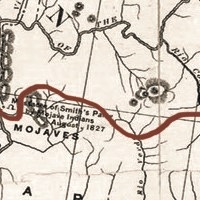 Through the power of their prayers and faith, their fat did light my lamps.
Through the power of their prayers and faith, their fat did light my lamps.
References to Norse mythology occur throughout Trinity. In ”Exile” there’s a direct reference to the Edda poems and tales ”Born into creation like a maggot in meat”. Dwarfs were created from maggots festering in the flesh of the primeval being Ymir. The Dwarfs were later given the gift of reason by the gods.
The caves of the world, one of which is inhabited by the protagonist, were created from the body of Ymir. The hills were created from the bones of Ymir. The song title can also be read as “the bones belonging to Ymir”, which shows the protagonist self-identifying as the primeval being born from venom whose corpse creates much of the world, in this case surrounded by the bones of his victims.
The protagonist’s situation in the cave is similar to the life of the legend Sawney Bean (robber and cannibal in 15th- or 16th-century Scotland). The protagonist is starting to lose his mind (or what is left of it) and imagines his victims climbing up from the shaft where he has dumped their remains. However, a posse discovers the cave. ”I heard them break into my den. They were overcome completely. Their loved ones’ meat and heads and feet were stacked or hanging neatly.” Our protagonist must escape.
12. Strangers in the Desert
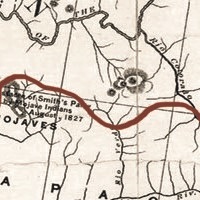 Having suffered many hardships, their hunger they just didn’t mind.
Having suffered many hardships, their hunger they just didn’t mind.
The protagonist encounters a caravan of Okies, poor migrants from Oklahoma, outside of Magdalena, NM. He offers them some food (presumably human flesh from his victims), but they kindly decline.
The protagonist is by now sick and paranoid. "My poisoned blood curdled as I saw through their disguise". He sees the Okies as demons from Hell.
The Okies give him medicine, pray and sing for him (hardly actions from demons from Hell). He wallows in self-pity. “Why do I deserve this?” The protagonist sees himself as a victim in this song, in strong contrast to the previous song. He may be unaware of his past actions or is just repressing memories. He's raving mad at this point and collapses in the sand.
The protagonist wakes up under the scorching sun with blood crusted on his hands. Of course, he doesn’t know where the blood comes from. The poor Okies are gone. The song ends ”Destitute and all alone, abandoned in this barren land. The venom surged behind my eyes as I lay there and wept. I felt my life sink in the sands so I gave up and slept”. The original title of the song was "Abominations".
13. Revelations
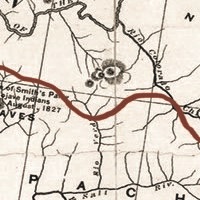 I spied a spectral ladder tying earth to Heaven.
I spied a spectral ladder tying earth to Heaven.
The music is more peaceful because the protagonist has resolved to die and accepted his death. Also, it recounts a dream (in my opinion the music signals reconciliation and tranquility).
With a red rock for a pillow the protagonist lays down to die. This is a reference to Genesis 28:10-19 where Jacob uses a rock for a pillow and dreams of angels ascending and descending a ladder into Heaven. When Jacob awakes, he exclaims ”Surely the Lord is in this place”. The concept of place is important in the next song.
The protagonist endures fevered dreams and visions. He sees the ghosts of his victims climbing the ladder to Heaven in groups of seven. They haunt him and cry out his crimes against them. Some slip off the ladder and are swallowed by the abyss. The victims are angels. This is a reference to the body of exegesis of Torah texts where the ladder signifies the exiles which the Jewish people would suffer before the coming of the Messiah. This ladder is again reflected in the aleph in the album’s artwork, where the diagonal line ties the heavens to the earth.
In his fevered dreams, the protagonist begins to see himself in a bit of messianic light. He alternates between clarity and self-aggrandizement. Hell's choirs well up from deep within the corpus of the earth.
The songs end with the protagonist swearing that he had never found that healer and then he is swallowed by the sand. "Revelation" is another word for "Apocalypse". The original title of the song was "Jacob's Ladder".
14. The Leper
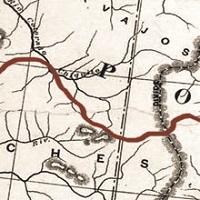 My visions had shown me who I was to see.
My visions had shown me who I was to see.
An albino farmer, with a face full of tumorous growths, finds the protagonist lying in the sand. The albino takes him to Socorro, NM (”socorro” means ”help” in Spanish) and gives him food, clothes and a bed (the Good Samaritan). After sleeping for a day, the protagonist thanks him for his hospitality by beating him nearly to death and robbing him of his meager funds. The protagonist then strikes out for Trinity.
The song ends ”My visions had shown me who I was to see: a healer named Maycomb out in Trinity.” Maycomb is an anglicized transliteration of the ancient Hebrew word “Makom”, a holy name of God which literally means “the place” or "the Omnipresent". The name implies personal introspection. The protagonist is looking for a place personified, which is also the reigning god.
The name Maycomb could have another meaning here. It’s also the fictional "tired old town" of Maycomb, Alabama, used by Harper Lee in “To Kill a Mockingbird” which involves racial injustice and the destruction of innocence.
15. Zero Point
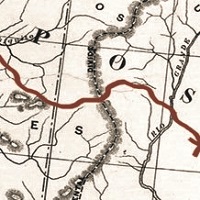 That foul star absorbed my being until we became as one.
That foul star absorbed my being until we became as one.
The protagonist, barely alive, arrives at the Trinity site and finds a dilapidated town. A coyote runs between the buildings. He sees a woman, dead and gray, skin peeled from her cold face. He has finally arrived at his goal.
He meets the healer, a man as vacant as the town, who sells the cure to him. The protagonist drinks the elixir in one gulp only to find out it’s worthless. All hardship has been for nothing.
The protagonist shoots the healer through the eye and hangs his body on a pine and sets fire to the town. As it burns to the ground, he stumbles out into the desert to die. ”Hopeless, crazed, and dispossessed, I walked out in the desert. My eyes swam in the heavens while my feet slept in the dirt. With no food, no water and no cure, I prayed for death to find me.” His flesh falls off its bones and his soul evaporates. Everything goes up in flames. The tempo and mood cranks up and ends in a splendid crescendo. This is probably how Armageddon will sound like.
In the song, several world religions are placed in a big melting pot. Christanity: Maycomb the healer (can be perceived as God), the dead woman (the biblical “Bride of Christ”) and our protagonist (Jesus). Jesus is about to be crowned as King. The hanging from the tree could refer to crucifiction and the fire could refer to Armageddon. Buddhism: ”This is because that is… This is not because that is not… This ceases to be because that ceases to be.” The shifting chorus underlines the buddhist assertion that everything in the world is interrelated. Norse mythology: Odin sacrified his eye in exchange for knowledge and wisdom. The protagonist shoots Maycomb in the eye and shake his brains out of the bullet’s exit wound, ensuring that no wisdom will be gained from the loss. The protagonist hangs Maycomb’s body from a pine (Odin hung himself from a branch of Yggdrasil for no less than nine days and nights to be worthy of more knowledge and wisdom).
”The coyote ran through fire and smoke, low upon the ground. A ring upon the woman’s finger lit up like the sun. As the coyote swallowed up her hand, Ragnarök was won.” In Norse mythology the Apocalypse is called Ragnarök. It’s started when the great wold Fenrir swallows the sun, which is reflected in the coyote swallowing the sun reflected in the woman’s ring. The Apocalypse could very well come in the form of a nuclear explosion (artificial sun). The coyote is presumably the healer/trickster god Coyote in his shapeshifting form.
The song title “Zero Point” comes from the elevated spot at which nuclear detonation is achieved (similar to “Ground Zero” being on the ground). The zero also hints at annihilation, and a closed loop or ouroboros. The original title of the song was "Godhead".
16. Ascension
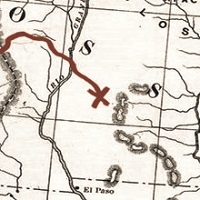 The palimpsest scraped and made ready again.
The palimpsest scraped and made ready again.
A palimpsest is a manuscript in form of a scroll which has had the text scraped off so that it can be reused. The palimpsest is the lyrical counterpoint to the ouroboros. Ascension is a musical description of the Apocalypse (Ragnarök) and completes the Resurrection theme of the album.
The reference to nuclear detonation is obvious. A mushroom cloud rises into the skies. “Shadows burned into walls”. When atomic bombs were dropped in Hiroshima (Little Boy) and Nagasaki (Fat Man), the shadows of the victims were permanently burned into walls by the heat.
Ascension means the act or process of ascending. In Christianity, ascension refers to the bodily rising of Jesus into heaven on the 40th day after his Resurrection. Again, religious and occultic themes and symbols are melted together in the song: The tree-like cloud of nuclear fallout can parallell the Tree of the Knowledge of Good and Evil in the Garden of Eden.
”A new King is crowned” (Christianity).
“The Magician unleashed”. In Tarot-based divination, The Magician (represented by the number 1) sometimes succeeds The Fool (0). In Trinity, this shows that the protagonist is ascending to a higher plane of existence. Tarot iconography has The Magician’s right hand pointing toward the heavens while his left points to the earth, showing his ability to connect the two (see picture below right), again calling to mind the aleph from the album cover. This is echoed in the words “as above, so below” from The Emerald Tablet of Hermes Trismegistus and the Hindu Vedas. In hermeticism the maxim “as above, so below” means that whatever happens on any level of reality (physical, emotional, or mental) also happens on every other level. This principle is often used in the sense of the microcosm and the macrocosm. The microcosm is oneself, and the macrocosm is the universe. Within each lies the other, and through understanding one (usually the microcosm) a man may understand the other.
”The palace burns to the ground.” Everything goes up in flames and the process starts anew.
What is Trinity really about?
 In another context Zebulon Whatley said that he thought the inner workings of Trinity would attract a very limited interest. I beg to differ. As mentioned above Zebulon Whatley is known for using several layers, double, triple and even multiple meanings and, occasionally, smokescreens. Trinity deals with the death of God (or gods). An easy-to-read description could be: story of a man that runs amok in the southeast of US in search for a cure. The executive summary above is telling: ”Trinity tells the story of a fool’s hellish journey through the blood-soaked deserts of the American Southwest through religious, occult, and alchemical allusions”.
In another context Zebulon Whatley said that he thought the inner workings of Trinity would attract a very limited interest. I beg to differ. As mentioned above Zebulon Whatley is known for using several layers, double, triple and even multiple meanings and, occasionally, smokescreens. Trinity deals with the death of God (or gods). An easy-to-read description could be: story of a man that runs amok in the southeast of US in search for a cure. The executive summary above is telling: ”Trinity tells the story of a fool’s hellish journey through the blood-soaked deserts of the American Southwest through religious, occult, and alchemical allusions”.
The epic story could be an allegorical journey, similar to Dante Alighieri's “The Divine Comedy” or John Bunyan's “Pilgrim's Progress”, about the price of faith. In ”Fallout “the Kingdom’s nine levels” is mentioned. This is a reference to Dante’s “The Divine Comedy”. The nine levels can represent Heaven or Hell, or in this case, both.
The protagonist is cast out of a town in the West and heads east. He's bitten by a serpent (or maybe not) and poisoned early on (maybe) and progressively sickens (true). He was wandering aimlessly before, but is now on a path. His new destination, Trinity, is said to offer a cure.
What he finds at the end of his journey is the burned-out husk of Trinity, barren and lifeless and fake. God (the healer) is a snakeoil salesman and a charlatan who has a fake cure. The protagonist guns him down in an act of deicide and sets the town on fire. At the site, the trinity of Father (the healer), Son (the protagonist), and Holy Ghost (the dead woman) is completed. The protagonist walks into the desert to die. The protagonist’s death mirrors the atomic blast at Trinity in its imagery.
In the process of writing this article you sooner or later will come across the question of the existence of God. This theoretical question, to say the least, has kept philosophers, theologians, scientists, and others occupied for thousands of years. Arguments for and against an existence have been presented, criticized and rejected. One interpretation is that God exists, but isn’t really a role model for a God. He deceives us constantly and takes great pleasure creating false hope just to watch us fall. The higher the vertical drop, the better. Descartes called this God the ”malevolent genius” or ”evil demon”. This interpretation is applicable on Trinity. Of course, there may not exist any God at all for that matter.
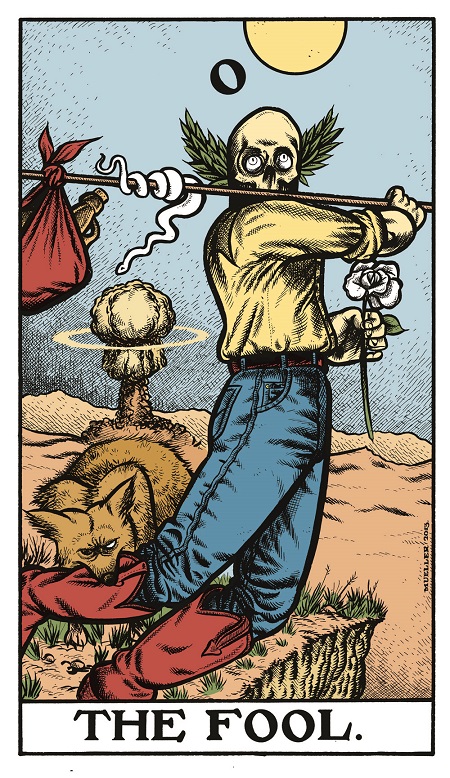 Another more political-philosophical interpretation of the story is that the protagonist himself is America‐as‐weapon. The protagonist is a reactionary character, born into a brutal and violent world that he can’t comprehend. As he struggles for purity (the cure for poison), he is corrupted by existence. Ultimately, the protagonist comes to realize that purity is a myth and he has been living in a lie all along. Unable to cope with this truth, he destroys himself and creation.
Another more political-philosophical interpretation of the story is that the protagonist himself is America‐as‐weapon. The protagonist is a reactionary character, born into a brutal and violent world that he can’t comprehend. As he struggles for purity (the cure for poison), he is corrupted by existence. Ultimately, the protagonist comes to realize that purity is a myth and he has been living in a lie all along. Unable to cope with this truth, he destroys himself and creation.
Despite all the theories, we are left only with speculations and our personal experiences of the album.
Trinity is a concept. A concept album is a studio album where all musical or lyrical ideas contribute to a single overall theme or unified story as opposed to albums that consist of a number of unconnected songs (lyrically and otherwise) performed by the artist. The Golden Age of concept albums was the 1970s. It's therefore pleasing that Zebulon Whatley dares to do something similar today. Trinity is a concept album if there ever was one.
But what is Trinity really about? The answer is that there are many answers. Some of the answers have been explored in this article. Under all circumstances, Trinity is a mighty and powerful experience that offers many chewy songs. However, who said it was going to be easy to digest?
Maybe there's a post-graduate student somewhere who will rise to the challenge, take on the mission to explore the ideas, themes and motifs further and push the forefront of research. Another scenario is to leave these delicate and elusive matters to amateur writers like myself. I have nothing more to say. To paraphrase Zebulon Whatley: "So concludes the article. I'm finished" (in both meanings).
Acknowledgments: Let us give credit where credit is due. Many thanks to Zebulon Whatley for sharing his private archive. His ability to express himself permeates the article. In fact, what I did was mostly the editing.

